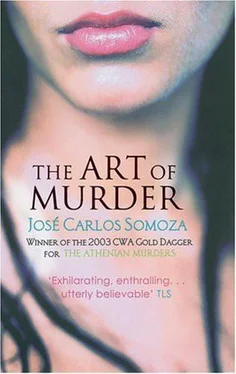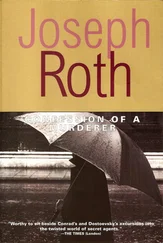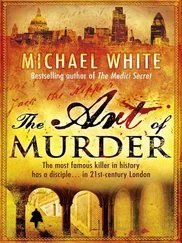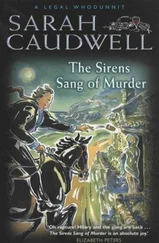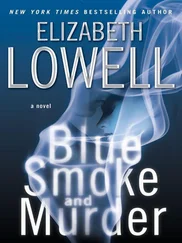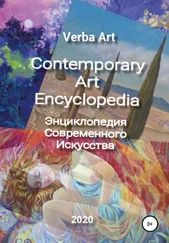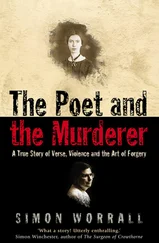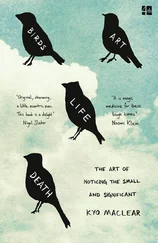Jose Somoza - Art of Murder
Здесь есть возможность читать онлайн «Jose Somoza - Art of Murder» весь текст электронной книги совершенно бесплатно (целиком полную версию без сокращений). В некоторых случаях можно слушать аудио, скачать через торрент в формате fb2 и присутствует краткое содержание. Жанр: Триллер, на английском языке. Описание произведения, (предисловие) а так же отзывы посетителей доступны на портале библиотеки ЛибКат.
- Название:Art of Murder
- Автор:
- Жанр:
- Год:неизвестен
- ISBN:нет данных
- Рейтинг книги:4 / 5. Голосов: 1
-
Избранное:Добавить в избранное
- Отзывы:
-
Ваша оценка:
- 80
- 1
- 2
- 3
- 4
- 5
Art of Murder: краткое содержание, описание и аннотация
Предлагаем к чтению аннотацию, описание, краткое содержание или предисловие (зависит от того, что написал сам автор книги «Art of Murder»). Если вы не нашли необходимую информацию о книге — напишите в комментариях, мы постараемся отыскать её.
Art of Murder — читать онлайн бесплатно полную книгу (весь текст) целиком
Ниже представлен текст книги, разбитый по страницам. Система сохранения места последней прочитанной страницы, позволяет с удобством читать онлайн бесплатно книгу «Art of Murder», без необходимости каждый раз заново искать на чём Вы остановились. Поставьте закладку, и сможете в любой момент перейти на страницу, на которой закончили чтение.
Интервал:
Закладка:
'Is there anybody there?' she heard herself say again.
She waited another prudent moment, her eyes fixed on the closed bedroom door. She remembered that all the light switches were in the hall. She had no way of lighting her room without leaving it and walking in the dark to the front wall. She did not have the courage to do it. Maybe it's a guard, she thought. But what was a security guard doing entering the farm at night and creeping about the living room?
The silence continued. Her heartbeats too. The silence and the heartbeats stubbornly measured their own rhythms. She decided she must have been wrong. There are many reasons wooden floorboards creak. In Alberca she had become accustomed to chance and its shocks: a sudden breeze bringing dead curtains back to life, the creaking sound of a rocking chair, a mirror suddenly disguised in darkness. All of this must be a false alarm raised by her weary brain. She could get up calmly, walk past the living room and switch the house lights on, just as she had done the night before. She took a deep breath and put her hands on the mattress.
At that moment the door opened and her attacker swept into the room like a hurricane.
7
The New Atelier building in Amsterdam housed the headquarters of Art, Conservation and Security for Bruno van Tysch's Foundation in Europe. It was a rather outrageous building, combining Dutch cheerfulness and Calvinist sobriety, with white-framed windows and seventeenth-century-style gables. To give it a cosmopolitan feel, the architect P. Viengsen had added twin columns a la Brunelleschi to the facade. It was on Willemsparksweg Avenue, near the Vondelpark in the Museum District, where all the artistic jewels of the city are to be found: the Rijkmuseum, the Van Gogh Museum, and the Stedelijk. The Atelier was eight storeys high, with three different blocks. Not unusual in Amsterdam, the entrance hall and first floor were below sea level. In his fifth-floor office, Bosch was probably safe from any threat of flood, although he didn't seem particularly aware of his good fortune.
His office – which included a V-shaped mahogany desk with four old-fashioned telephones on one end and three framed photographs on the other – looked out on to the Vondelpark. The photos were placed so that no one sitting opposite Bosch could see them.
The one closest to the wall was a portrait of his father Vincent Bosch. Vincent was a lawyer for a Dutch tobacco firm. The man in the portrait wore a moustache, had a penetrating gaze, and a huge head, which Lothar had inherited. He looked like a methodical, scrupulous character. The guiding maxim he tried to pass on to his children – achieve the best possible results with the means available – appeared to be chiselled into each and every one of his features. He would have been pleased with the results.
The photo in the middle was of Henrickje. She was pretty, with short blonde hair, a broad smile, and a certain horsiness about her jaw owing to over-prominent teeth. Bosch could vouch for the fact that her body was perfectly well proportioned: Hendrickje liked to show it off in attractive stripey dresses. She was twenty-nine, five years younger than Inspector Bosch, and was rich. They met at a party where an astrologer got them together because of their zodiac signs. Bosch was not attracted to her at first; they ended up getting married. The marriage worked perfectly. Hendrickje – tall, slender, wonderful, attractive, sterile (a problem diagnosed ten months after the wedding), ladylike and positive ('You have to think positively, Lothar', she used to tell him) enjoyed the privilege of having several lovers. Bosch, stubborn, serious, solitary, silent and conservative, only had Hendrickje, but felt that the mere fact of loving her did not mean he could hold her against her will, like the criminals he so detested. Respecting other people's wishes was part of the ideas of freedom that the young inspector had lived by during his troubled adolescence, when he was an okupa in a building on the Spui. It was almost perverse that the same Lothar Bosch who threw stones at the anti-riot squads from the Golfillo statue should a few years later join the city police. On the rare occasions when he still asks himself why he took that decision, he believes he can find the answer in the portrait of his father (back to him), and his sceptical Calvinist gaze. His father wanted him to study
Law, he wanted to be useful to society, his father wanted him to earn money, he did not want to work with his father. So why not become a policeman? A logical decision. One way 'to achieve the best possible results with the means available'.
To some extent, Hendrickje liked him being a policeman. This gave a certain security, or 'stability', to the image of their marriage. Their fights were as rare as were their moments of love, so that in this way, at least, their relationship was balanced. Then one foggy morning in November 1992, it had all come to a sudden end: Hendrickje Michelsen was returning by car from Utrecht when a lorry trailer guillotined her. The impact not only spilled her brains instantaneously, but took with them her head (her beautiful blonde-haired horsey head, the one we can see in the photo), and also her slender neck and part of her upper body. She had gone to Utrecht to visit a lover. Bosch heard the news while he was questioning a man suspected of several murders. He went numb, but chose to go on with the interrogation. Eventually the suspect proved to be terribly innocent. Then one evening in March, four months after the tragedy, a supernatural event took place in the house of the lonely, widowed inspector. The doorbell went, and when he opened it Bosch found himself face-to-face with a girl with straw-blonde hair who said her name was Emma Thorderberg. She was wearing a leather jacket and jeans, with a bag slung over her shoulder. She explained why she had come, and an astonished Bosch let her in. The girl went into the bathroom and an hour later it was Henrickje who came out, wearing her striped dress. She took several long, elegant strides with the bare, shiny legs of someone risen from the dead, and then took up a position in the dining room without so much as a glance at the open-mouthed Lothar. The painting was by Jan Carlsen. Like all artists, Carlsen had reserved the right to change the original: he had shortened the skirt and lowered the neckline to make her more seductive. Apart from that, the cerublastyne had created an exact equivalent: it was as if Hendrickje were alive.
Afterwards he found out who had sent him this surprise gift. 'It was Hannah's idea,' his brother Roland explained on the telephone. 'We weren't sure how you would take it, Lothar. If you don't like it, send it back. Carlsen assured us we could sell it on.'
At first Bosch was tempted to get rid of the work of art. He felt so disturbed he could not eat in the same room but had to move elsewhere to avoid looking at it. He had no idea whether this feeling was due to the fact that Hendrickje was dead, or that he did not want to have to remember her, or for God knows what other obscure reason. Like the good policeman he was, he began by discounting the least likely reasons. If he kept photos and mementoes of his wife, why couldn't he bear that? This meant the first two possibilities could be dismissed. The final conclusion he reached was surprising: what disturbed him so much in the portrait had nothing to do with Hendrickje, and everything with Emma Thorderberg. What most intrigued him was not knowing who was hidden behind the mask. In order to free himself from this fascinating horror, he decided to approach the canvas. One night as she was leaving (the contract stipulated six hours on show at his house), he kept her back with a few banal questions about her profession. They both had a drink, and Emma turned out to be talkative and impetuous, not as educated as Hendrickje, with a less well-defined personality. She was more beautiful, more sympathetic, much less selfish. Bosch discovered something: Emma was not Hendrickje and never could be, but she was very worthwhile in her own right. Once he had discovered this (that Hendrickje was in fact Emma Thorderberg in disguise) the portrait became a carnival joke. He was no longer disturbed when he looked at it, or ate and read in its company. When he realised this, he decided to return it. After quickly compensating Carlsen, they succeeded in selling it to a collector his brother was treating for a throat infection. They even made a profit on the sale. So now Hendrickje is living with someone else. The only thing Lothar regrets is that Emma has gone, too. Because it's not art that is important, according to Bosch, but people.
Читать дальшеИнтервал:
Закладка:
Похожие книги на «Art of Murder»
Представляем Вашему вниманию похожие книги на «Art of Murder» списком для выбора. Мы отобрали схожую по названию и смыслу литературу в надежде предоставить читателям больше вариантов отыскать новые, интересные, ещё непрочитанные произведения.
Обсуждение, отзывы о книге «Art of Murder» и просто собственные мнения читателей. Оставьте ваши комментарии, напишите, что Вы думаете о произведении, его смысле или главных героях. Укажите что конкретно понравилось, а что нет, и почему Вы так считаете.
